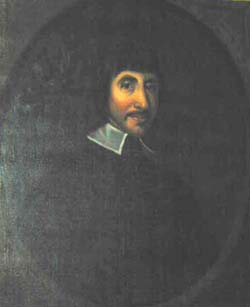 |
| John Winthrop the Younger - Public Domain from the CT State Library |
Thomas
Jefferson, the third President of the United
States is credited with finding the first
gold on his estates in Virginia
in 1797, but the first gold in the Colonies was discovered in Connecticut
by John Winthrop the
Younger, Connecticut ’s first
governor in the mid-1600s. John had a
great interest in metallurgy and was one of the driving spirits behind the Saugus Iron Works
in Saugus , Massachusetts Massachusetts in the
mineral wealth of the colony.
In 1635 after he returned from England
he went to the Connecticut
Colony as governor of Connecticut
for one year under the Saye and Sele Patent where he sent out a party to build
a fort at Saybrook
at the mouth of the Connecticut River . After a year he returned to Massachusetts
where he studied science for a time. He
then returned to Connecticut when
he received title to lands in 1645 to lands in south-eastern Connecticut
where he founded in 1646 New London.
In 1662 he obtained in England
the charter from the Crown that united the two colonies of Connecticut
and New Haven . At the time he was also the governor of Connecticut
and in 1675 one of the commissioners of the United Colonies of New England.
It is quite possible that J.R.R. Tolkien
heard about the gold rings Winthrop
cast and incorporated the tale into his Trilogy “The Lord of the Rings.” Tolkien was also a member of the Royal
Society, and had access to their archives.
In 1984 Anthony Philpotts
a geology professor from the University of
Connecticut and his class discovered gold at the cobalt mine in Cobalt that
assayed at 6 ounces per ton in roughly the same area as where Winthrop
had worked almost three hundred years ago.
The gold was found in a quartzite
formation that extends from Great Mountain , Connecticut New Hampshire .

No comments:
Post a Comment